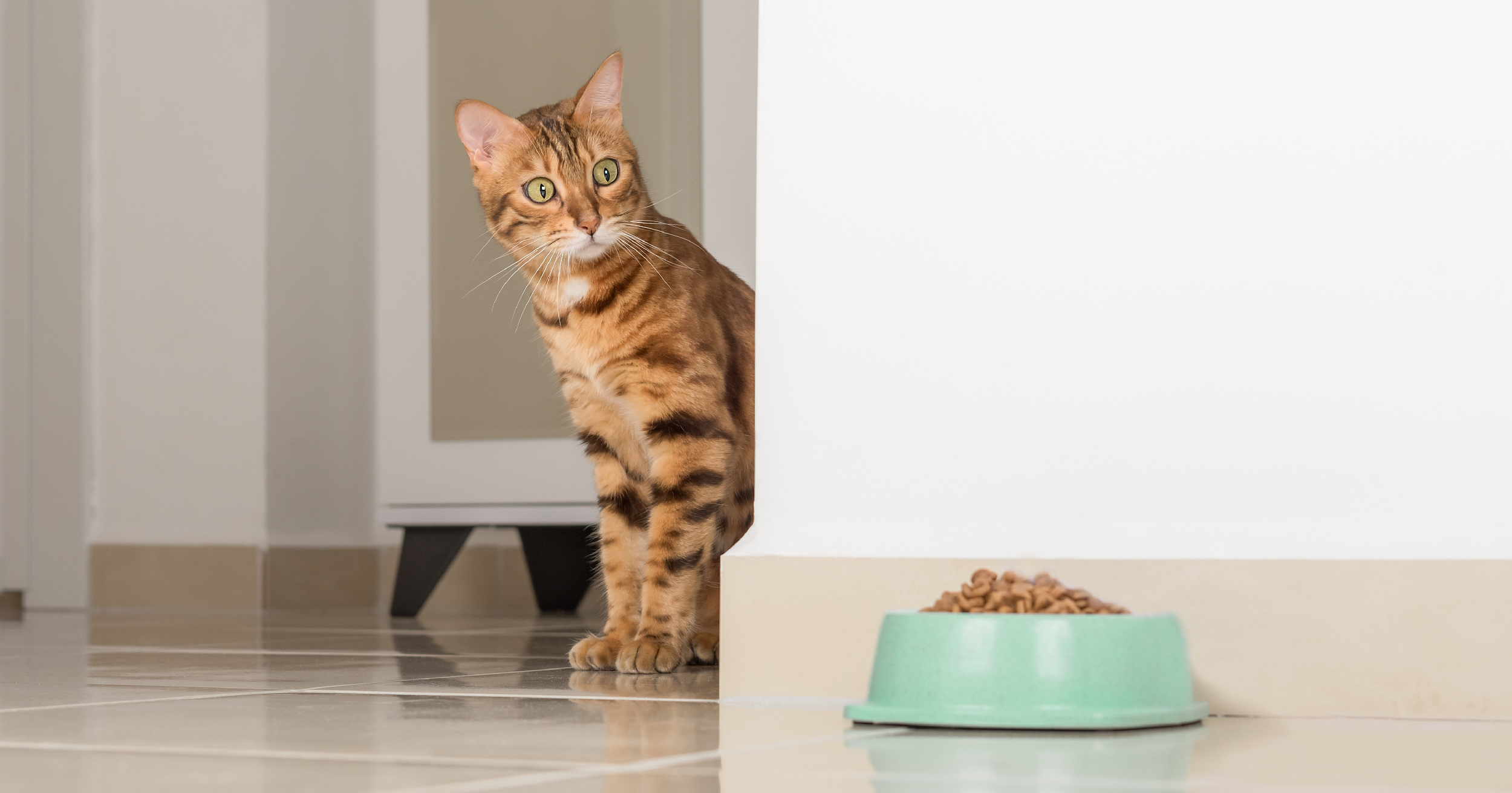
Commercial pet food typically comes in a variety of flavors and textures (e.g., kibble or canned). Pet food is manufactured with these options to match the preferences of pet parents, but also because your pet may have preferences for the type and flavor of food they like. But what exactly is influencing which food your pet likes best (or at least what they will or will not eat)? Let’s find out.
Taste Is a Small Part
Cats and dogs have a weak sense of taste compared to people because they have fewer taste buds — cats have around 470, dogs around 1700 and people have around 9000 taste buds. Dogs can taste sweet, sour, salty and bitter flavors but dogs (and cats) typically don’t like bitter tastes, which is why they’re often used in taste deterrents.
Unlike people, dogs and cats can taste water. Cats can also taste the energy compound ATP (adenosine triphosphate), which is thought to tell cats that they’re eating meat — an important signal since they’re obligate carnivores. Another big difference between a cat’s taste bud groups and a dog’s and a human’s is that cats can’t taste sweet things. A horrifying thought for human chocoholics!
A Flavorful Aroma
When we eat food, about three quarters of the flavor we’re experiencing actually comes from the smell of the food. Flavor works the same way for cats and dogs, so even though they don’t have as many taste buds as we do, they make up for this with their far superior sense of smell.
If your pet prefers canned food over kibble, it’s possibly because most canned food has a strong smell, which makes it more appealing to cats and dogs. It can certainly create a pungent aroma in the kitchen when you open the can! But taste and smell aren’t the only influences on food preferences — there’s one more thing.
The Mouthfeel
Cats and dogs will also show preferences for the texture of food or the “mouthfeel.” Have you met someone who won’t eat mashed potatoes because they don’t like the texture? Similar preferences can occur in cats and dogs — they may prefer how some food feels in their mouths over others, which includes the shape and size of kibble. Bonus fact — it’s thought that some dogs eat grass because they like the taste and texture of chewing on it, not because they’re feeling sick.
Nutrition First, Then Taste
At Diamond Pet Foods, we prioritize our choice of flavors based on meeting nutritional goals, audience demand and ingredient sustainability. Nutrition, not taste, is always the first priority for our nutritionists and veterinarians when they formulate food for dogs and cats. But, of course, it also has to taste good for pets to benefit from the nutritious food, so flavor is an important part of our formulation considerations.
New Tastes and Textures Take Time
If you need to switch your pet to a new food, the trick is to do the transition slowly. This will help them adjust to the flavor and/or texture of the new food, and it will help reduce the chance of an upset stomach as their digestive tract adjusts to the new food, too.
First, check with your veterinarian that the new food is suitable for your pet. Start by mixing 25 percent new food with 75 percent old food for a few days, then gradually increase the amount of new food over the next 10–14 days until you’re at 100 percent new food. If you’re transitioning from canned or wet food to kibble, the process may take longer, as the dry food has a different taste and texture. You can try mixing a little wet food into the kibble or add some water to encourage your pet to eat it.
It’s also important not to give in too quickly to pets refusing to eat their new food. If your cat or dog doesn’t eat their food straight away, let the bowl sit there a while. If you rush in and give them a well-done filet mignon (NOT RECOMMENDED!) because they didn’t immediately eat their food, they’re going to learn that trick pretty quickly. Soon you’ll end up with a very expensive grocery bill, and your pet won’t be getting the nutrition they need from eating a complete and balanced pet food.
However, if your pet hasn’t eaten anything for 24 hours, contact your veterinarian. They will make sure there isn’t a medical issue causing your cat or dog’s loss of appetite. This is especially important for cats because if they don’t eat for more than 36 hours they can develop fatty liver disease (hepatic lipidosis), which can be life threatening.
Your pet’s preferences for the foods they will and will not eat are complex — just like ours. So it’s possible, for example, that if you have two dogs, they will prefer different foods because of the taste, smell or texture.
RELATED POST: Debarking Pet Myths: Dog Food and Cat Food Aren’t the Same Foods

